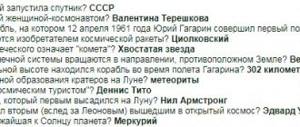Beginning and ending rituals
The presence of rituals for the beginning and end of a lesson is very important when working with preschoolers in groups. Rituals allow you to better organize children, set them up for work, unite them and create the necessary atmosphere. The organizational moment helps children understand where the lesson begins and where it ends.
Plan of educational work according to the Federal State Educational Standard
Examples of rituals for starting and ending classes:
- “Continue the sentence.” The teacher begins the sentence, and the children sitting opposite take turns completing it. For example, the teacher says: “What I like to eat most is... apples” or “My favorite game is... hide and seek.”
- “Pass the signal!” Children sit or stand in a circle and hold hands. The teacher chooses a beginner, and on command he lightly squeezes the hand of the one standing on the left, and the one next. And so on several times until the “signal” transmission speed becomes as fast as possible.
- “Come on, repeat it!” The teacher demonstrates a movement, pose or facial expression, and the kids must repeat it all together.
- “Today I found out...” This ritual is suitable for ending a lesson. Each child begins the construction of his sentence with this phrase and supplements it with what he remembers most from this lesson.
Morning greeting charges you for the whole day
- Physical education session to the same song or melody. A good option would be to start or end the lesson with the selected musical composition. Thanks to this, it will be easy for kids to record the moment of beginning and ending.
- “What am I?” The essence of this ritual is a short story for each little one about himself. Children are given the opportunity to think a little about what they will say, and, starting with the teacher, each child says a few words about himself. There is no point in carrying out this ritual every day, but by periodically returning to it, you can make it clear to children that some qualities and characteristics of a person remain unchanged for a longer time, while others, on the contrary, change every day.
- “The sea is agitated once...” This well-known children's fun is also suitable for the role of a ritual. It is simple, cheerful, but at the same time requires a certain amount of attention from the participants.
There are a great many variations of these rituals, the list is available to everyone. The teacher needs to choose those that are most suitable for his students and the classes he conducts.
Note! It is important to remember that it is better to use different rituals to start and end classes. It is enough to select a few to start with and a few to finish. This will make it easier for children to record these moments.


